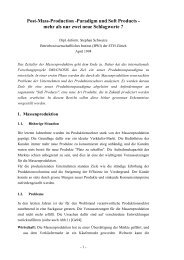The China Venture
The China Venture
The China Venture
You also want an ePaper? Increase the reach of your titles
YUMPU automatically turns print PDFs into web optimized ePapers that Google loves.
After its suspension during the period from 1956 to 1966, the legal system got literally<br />
destroyed with the so-called “Cultural Revolution”. <strong>The</strong> country was in a complete chaos, law<br />
was abolished and the legal apparatus, which was already inert, was completely smashed.<br />
After the “Cultural Revolution”, <strong>China</strong> began to engage in unprecedented legal<br />
reconstruction. Law was regarded as the most efficient and institutionalised means to<br />
safeguard people’s democracy, to prevent sudden social changes and to maintain the sustained<br />
economic development of the country. In the economic field, the policy of structural reform<br />
and opening up to the outside world has been introduced and implemented; the rigid planned<br />
economy has been abandoned in favour of a “Socialist Market Economy”. Corresponding to<br />
such a social scenario, the legal system has been redesigned for the purpose of implementing,<br />
institutionalising and strengthening the reform enterprise. <strong>The</strong> main achievements of the legal<br />
reconstruction include the following:<br />
<strong>The</strong> ideological change has to a great extent changed the popular view towards law. Chinese<br />
government and its population have become aware of the importance of law.<br />
Since 1979, <strong>China</strong> has embarked on a large-scale legislative endeavour with 3 new<br />
constitutions, more than 200 new laws and 80 decisions of the National People’s Congress;<br />
more than 700 administrative regulations of the State Council and its ministries, commissions<br />
and other branches; about 3,000 local regulations, and more than 10,000 local administrative<br />
rules of the local governments and their agencies.<br />
Throughout the country, a legal structure has been established, including the system of the<br />
people’s courts, the system of the people’s procuratorates and various governmental law<br />
enforcement organs.<br />
<strong>The</strong> legal profession has reappeared.<br />
Despite these achievements, some negative aspects of the systems could not be overridden.<br />
Severe problems due to profound contradictions and structural problems still need to be<br />
solved.<br />
2.2.2 Governmental structure<br />
<strong>The</strong> structure of the Chinese government exercises a great influence on the operating legal<br />
system. As a socialist country, <strong>China</strong>’s political structure is established on the system of<br />
pe ople’s congresses which are responsible for creating and supervising the administrative and<br />
judicial organs at all levels. Since the PRC adopts the unitary system and the principle of<br />
10






